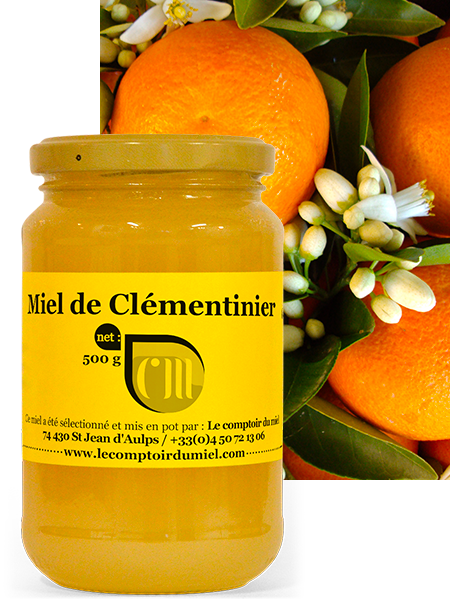The clementine tree, not to be confused with the mandarin (Citrus x clementina) is a shrub resulting from hybridization between a mandarin and an orange tree. Its fruits are smaller than those of its mandarin cousin and, above all, seedless! And that’s what makes all the difference!
These two fruit trees are used, like other citrus fruits, in perfumery and pastry-making. However, the fruit is also eaten fresh, providing a significant source of vitamin C! Enjoy without moderation, especially in winter.
Citrus clementina is an evergreen, well-branched shrub that can reach heights of up to 6 m and is grown in the open ground. Generally pruned, however, it is often kept within two meters of the ground. Its leaves are green, shiny and aromatic. Its white flowers appear at the end of the branches and are pleasantly fragrant.
Clementines turn orange when temperatures drop. That’s why you can find clementines at the beginning of winter!
Our clementine honey from France is harvested in the region of Calenzanaon the eastern plain between May and June. When harvested, it is a very clear, golden liquid. As it crystallizes, it takes on a pale yellow, fine-grained color.
The taste, smell and preservation of clementine honey:
Both sweet and slightly acidic on the finish, French clementine honey is very rare. Harvested on the eastern plains, it is rarely found on the mainland.
Its aroma is delicate. There are hints of jasmine, which give way to a fruity fruity flavor and a hint of citrus on the finish.
Clementine honey has the tangy sweetness common to lemon and orange tree honeys. Discreet and delicate, this honey will appeal to lovers of sweet honey. It’s perfect on toast or in cooking. It also keeps well.
The benefits of clementine honey :
Clementine honey is highly appreciated for its digestive properties. It’s also a natural sedative.
Did you know?
These crosses were first developed in Algeria by a missionary named “Père Clément”. So it was only natural that the fruit should be called clementine.

Reviews
There are no reviews yet.